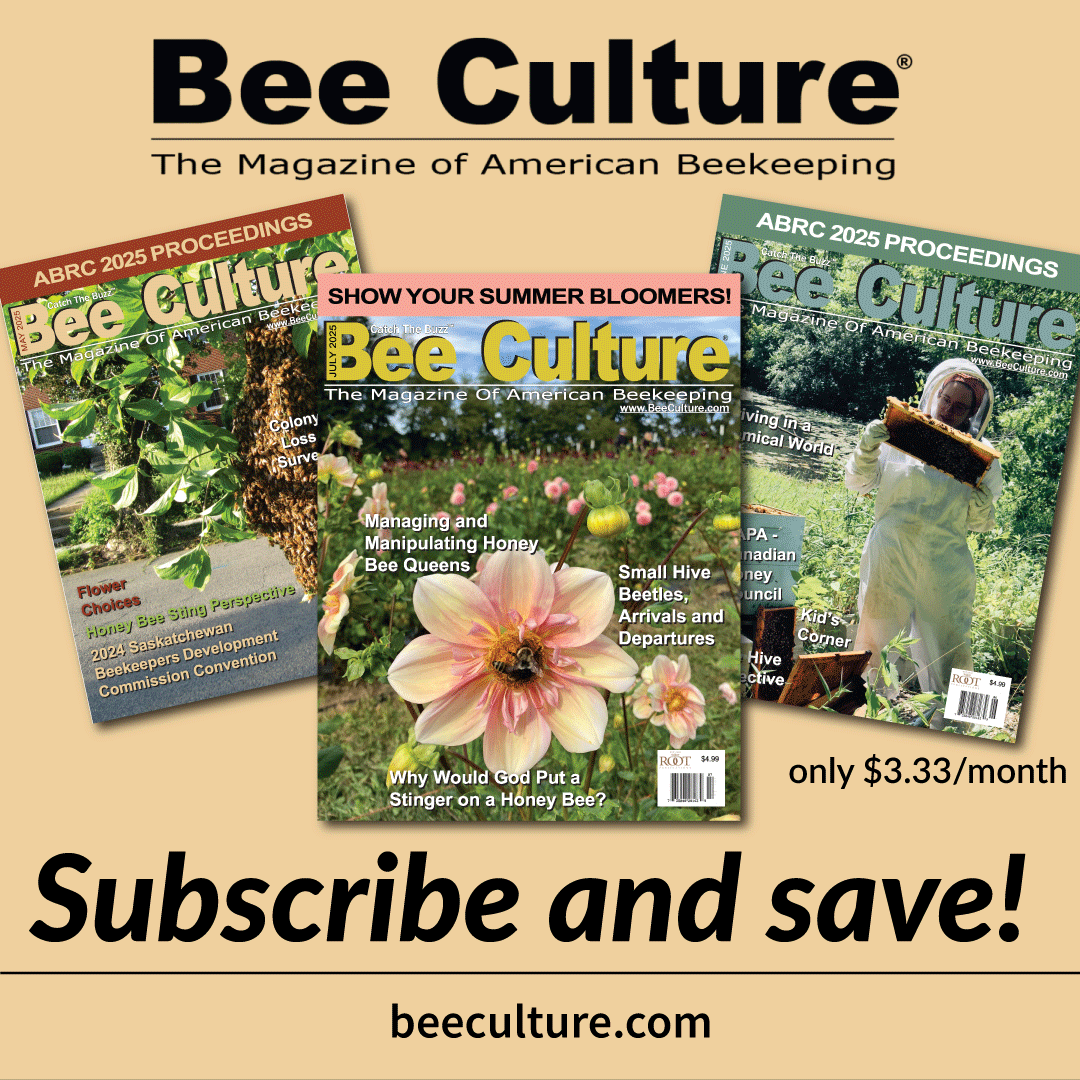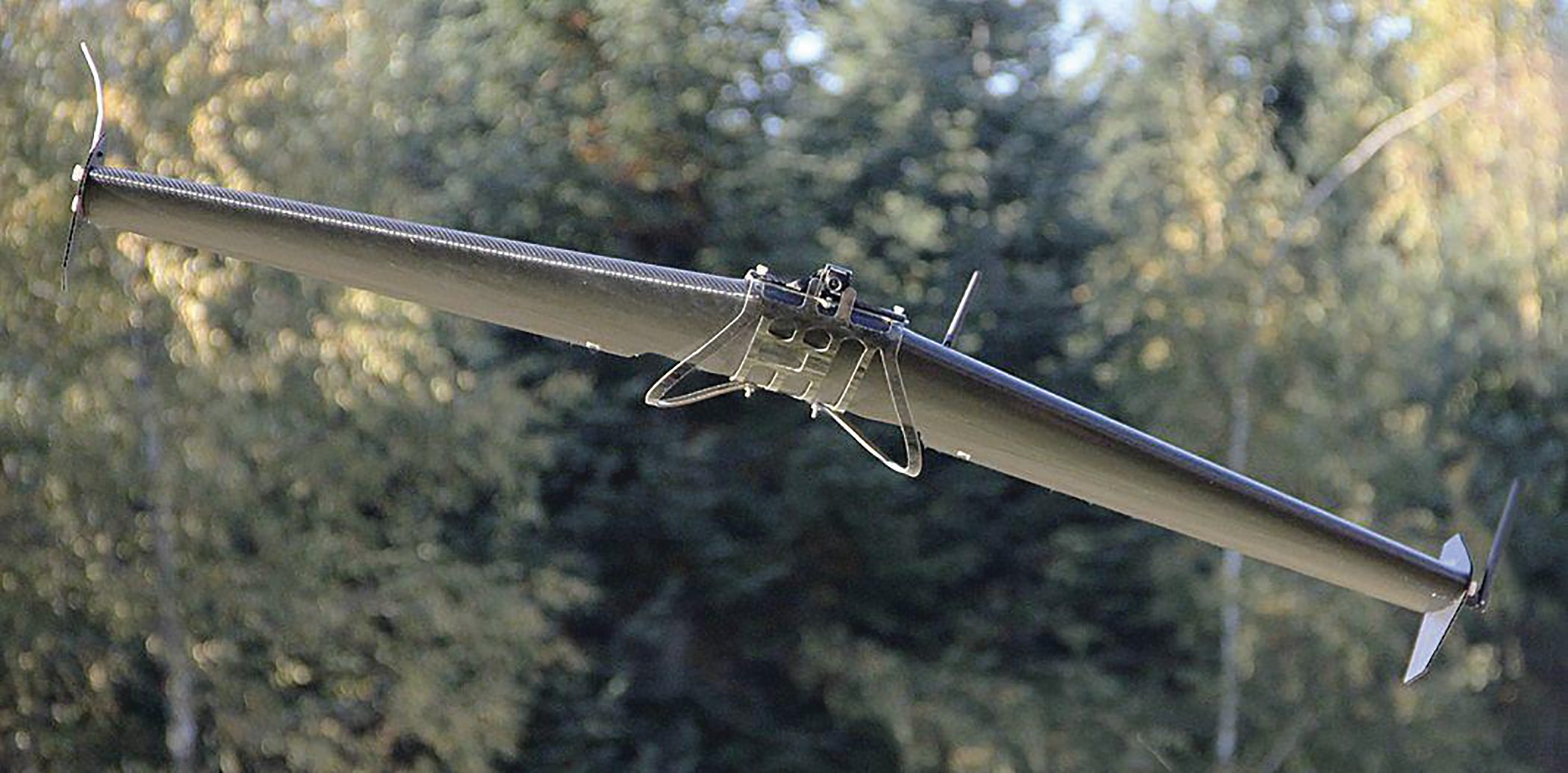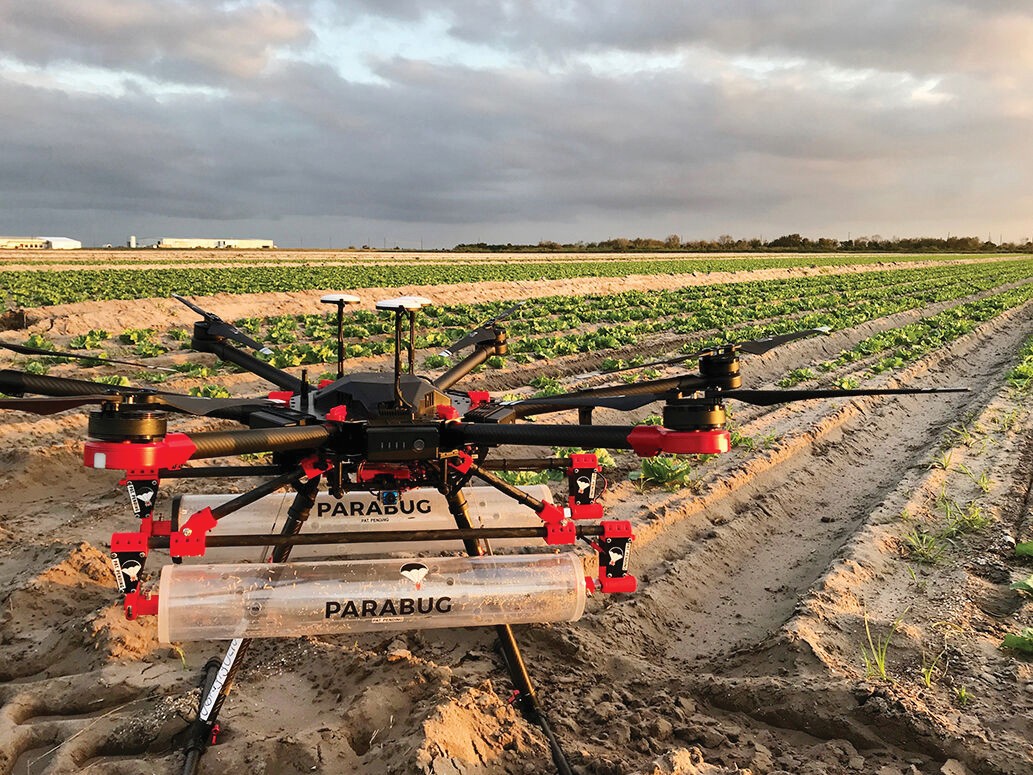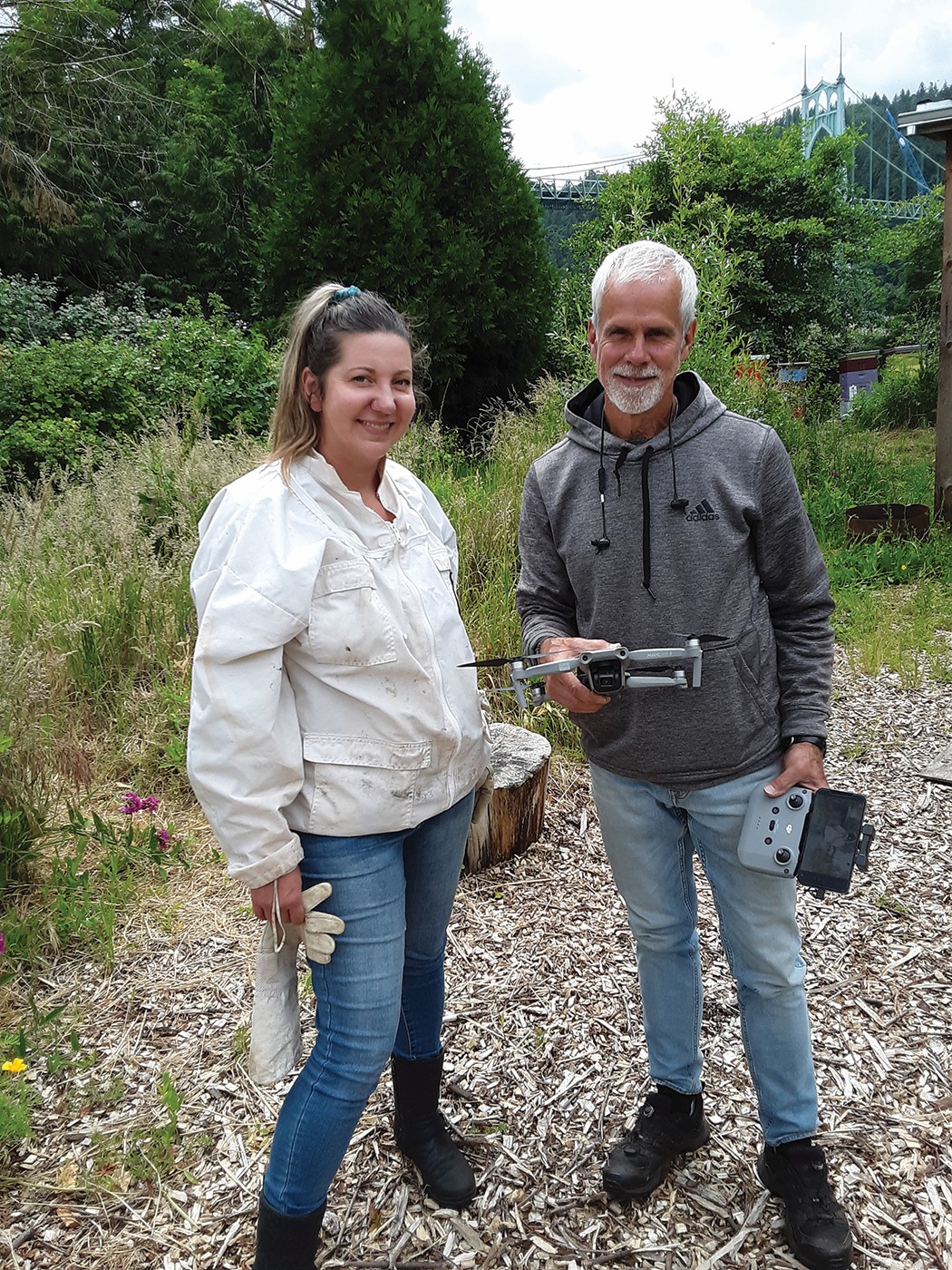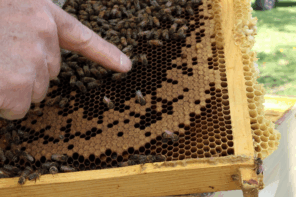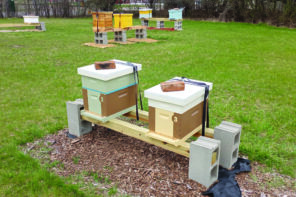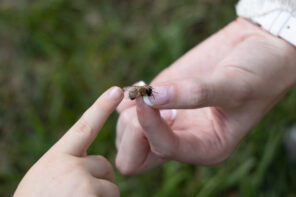Dewey Caron
Have you ever flown a drone? Not the live drones you find in your bee colony or tethered drones you might fly at a bee display but instead have ever flown a robotic drone or hired someone to do so? Drones, or unmanned aerial vehicles (UAV), sometimes referred to as “Bot flies,” were initially developed for war and espionage. Today they are responsible for those breathtaking photos you see when you open your computer. They are the best seat in the house for coverage of sporting events. Real estate loves them. They help spot forest fires as they start and their use is expanding in research and farming.
Research is demonstrating how drones can help blueberry farmers. Flying drones can quickly spot troubled areas in a massive blueberry patch in a fraction of the time it would take on foot. Their use can help solve labor shortage problems and help blueberry farmers improve their bottom line. “Flying robots” can fly over a field as high or as low as needed. Equipped with cameras with different lens, farmers can use drones to recognize potential issues that cannot be seen by the human eye or easily detected from the ground.
Oregon Blueberry Commission Administrator Bryan Ostlund points out new technologies. He states drones have become important “to help farmers lower production costs and get an edge over climate change. Efficiency is key, and that’s what drones are all about.” In states with rapidly expanding blueberry acreages of Oregon and Washington, David Bryla, USDA horticulturist, along with Scott Orr, a USDA biological research technician, are seeking to develop an app farmers will be able to download on their phones. The pair demonstrated drone use at a blueberry pre-pandemic field day hosted by Oregon State University’s Extension Service. The audience was impressed.
It is predicted that unmanned drones are a technology that will continue to advance in agricultural applications. A camera carried by a drone enables crop farmers to quickly and inexpensively capture information to identify potential issues. They are especially useful in detection of cultivation issues around water, pests, soil, and fertilizers. The drones can sense leaf color variation, densities, crop stress, and even irrigation leaks. They might even protect foraging honey bees by helping farmers target their pesticide applications. Drones are only part of the equation. Also needed is computer support, broadly termed AI (artificial intelligence), to analyze aerial images and provide farmers with real-time data to monitor crop health. https://www.ordermentum.com/blog/how-drones-computer-vision-and-ai-are-transforming-the-agricultural-industry
Startup companies are seeking ways to assist the agricultural sector to expand drone use. A key is to use the drones over a period of time. This will enable farmers to see changes in plant health and canopy structure of their crop. It is not one and done. Changes can be due to insufficient soil nutrients, inappropriate soil moisture, or pest attack, so ground-truthing is needed. When a negative situation is detected, the drone then can be equipped to deliver corrective measures such as additional fertilizer or spot application of a pesticide.
An example of a startup is Viewpoint Aerial Agriculture in Salem Oregon. Before the pandemic they started to fly drones commercially over farms, fitted with multi-spectral and infrared cameras to detect areas where crops may be experiencing stress from pests, disease or drought. Our farmers, although having worker availability issues with the pandemic, were reluctant to contract for the technology. To keep afloat Viewpoint then partnered with Parabug, a California company, to use drones in biological pest control. They fitted the drones with special holding cylinders to airdrop beneficial insects into fields to help farmers combat crop pests reducing the use of chemical pesticides. During the rainy fall and winter, they move to Florida to work the drones in citrus and other crops. https://www.capitalpress.com/ag_sectors/nursery/farm-drone-company-turns-to-beneficial-insects-amid-pandemic/article_c6b1ecc8-7dd5-11eb-b50d-733596f229be.html
One giant in the ag field, Wilbur-Ellis Agribusiness, a well-known prominent ag service and supply company, perhaps better known for their seeds and biocontrol beneficial agents, are experimenting with AgDrone. This flying robot is made by startup HoneyComb Corp. of Wilsonville, Oregon. The company, started by three young entrepreneurs, makes a battery-powered winged drone equipped with visual and spectral-imagery cameras that can map fields and spot crop problems. Most drones have four rotors rather than fixed wings. Wilbur-Ellis calls their drones a critical tool in precision agriculture.
Precision Agriculture offers the opportunity for a farmer to apply the right amount of treatment at the right time and at the right location for crops/animals. Using drones and the support technology built into a computer, is an evolving tool that helps a farmer collect timely high-resolution data. The key, in addition to the use of drone-based sensing, is the program of highly sophisticated image interpretation required to interpret what the drone can sense.
For beekeepers, the parallel is Precision Apiculture. Beekeepers sample hives on a regular basis, count mites and keep records of things like seasonal weight gains and mite numbers. Sampling is especially important before and after mite treatments to assess both treatment necessity and, once a control is used, to measure its effectiveness. Drones, the real ones, can be raised and then eliminated before they emerge as adults, to assist in limiting increase of mite populations in the spring. For many beekeepers, precision apiculture also means selecting the best colonies to use to improve stock based on overall colony performance. It is not just one quality but an overall performance; record keeping is critical for mite control and stock improvement.
Use of drones has not yet developed to the point to help beekeepers with such selections but there are still numerous uses for aerial drone service. A drone can check on apiaries to insure there is nobody bothering them, to check for colonies blown over or knocked over by irrigation booms. During winter, they can check on how the apiary is doing, saving having to go out and check. Following storms, they can likewise check to be sure all is OK in the apiary. They can be used to determine land patterns to possibly avoid an apiary site that might be flooded.
Drones can be used to search the 8042 acres (two-mile radius) your bees are currently visiting so you might better ID floral resources or find better floral opportunities. Or maybe you could use them to find an alternative apiary site since you made so many splits (for mite and swarm control) this year. We always need another apiary site. It has been suggested they can find Drone Congregation mating sites. A word of caution, however — Drones can and reportedly have been used to find your apiary site and how you access the location to enable hive thievery. Also, worker bees do not “like” the drones and can be seen “attacking’ them when they are flown in the immediate vicinity of colonies.
We know in beekeeping that drones, the real living variety, are critical in helping maintain stock lines. You may have heard about a new honey bee being developed in Hawaii – not on the west side but in the Hilo area. Hilo breeding site has focused on refining lines of bees that previously were identified as having mite resistance/tolerance but were not consistently effective in controlling mites. The process produced a pool of Varroa resistant/tolerant bees. Drones with the same resistance/tolerance are critical to the stock improvement project.
The Hilo Bee project is a public-private partnership developed with the USDA, Project Apis m., Hawaii Island Honey Company, and Arista Bee Research. Combining breeding tools and expertise in a commercial beekeeping operation, these partners have been working to develop a honey bee that is naturally resistant/tolerant to Varroa mites with traits to be successful in commercial beekeeping. Maintaining sufficient drone mother colonies is key.
Kim Flottum discussed drones in his June 2019 Bee Culture editorial. He also included other perhaps more familiar present and future technology innovations in beekeeping. One drone technology firm he mentions was Dropcopter. Dropcopter reports they can help growers produce “. . . way more fruit using a drone than when using honey bees – a 25-60% pollination set on cherries and almonds and significantly increasing the pollination of king blooms on applies.” King bloom provides the best apple of a blossom cluster. They also report use of their drone with pears. They operate in California, New York and Washington State.
They collect dry pollen from the targeted crop and then fly over trees in bloom to release the pollen. They use a large multi-rotor drone. They identify their service as specializing “. . . in dispensing the right pollen at the right time to the right places in an orchard to help growers achieve a better fruit set and harvest.” Bar graphics supplied show this advantage for almonds, cherries and apples. They suggest they can supply pollen to areas not covered well by rental honey bee colonies.
May Berenbaum Buzzwords columnist in American Entomologist discussed “bot flies” (artificial drones) in her summer 2019 column. She says Walmart the mega-marketer has taken out a patent on Pollinator “drones” entitled “Methods for pollinating crops via unmanned vehicles.“ According to Berenbaum, Walmart wishes “control over its future food supply chain in the post-bee-apocalypse hellscape”. Berenbaum, May. 2019. Bot-Flying. American Entomologist, 65(2), 76-78 https://doi.org/10.1093/ae/tmz029
The smallest drones are being investigated as substitutes for real flower pollinators. Harvard University Wyss Institute has developed a robot suitable for pollination. The project was funded by DARPA (Department of Defense Advanced Research Project Agency). The drone named “RoboBees “weighs less than two grams, beats its wings 120 times per second and can perch, fly and swim but still can’t navigate around other flying objects.” That might limit their field-worthiness. https://wyss.harvard.edu/technology/robobees-autonomous-flying-microrobots/
The Robo-Bee website calls their microbots “Insect-inspired robots with potential uses in crop pollination, search and rescue missions, surveillance, as well as high-resolution weather, climate, and environmental monitoring”. With a slightly greater than one inch wingspan, RoboBee, which took 12 years to develop, is the smallest man-made device modeled on an insect to achieve flight. Currently it is controlled with a tether line, but further development is seeking to make flight completely independent.
Eijiro Miyako, a chemist at Japan’s National Institute of Advanced Industrial Science and Technology (AIST) Nanomaterial Research Institute, demonstrated use of an artificial 4X4 cm (slightly more than 1½ inches) sized drone to move pollen from one flower to another. He simulated the bee’s hairy skin by using horse hair coated with a gel. The drone hovered over pink-leaved Japanese lilies (Lilium japonicum), to attract and hold the pollen and then flown to a second flower, where grains were deposited accomplishing artificial pollination. Control drones (without the gel and hair) did not pollinate. Dr Miyako states that “the findings, which will have applications for agriculture and robotics, among others, could lead to the development of artificial pollinators and help counter the problems caused by declining honey bee populations”. Chechetka. S.A. et al. 2017. Materially engineered artificial pollinators. Chem 2(2):224-239. http://www.cell.com/chem/fulltext/S2451-9294(17)30032-3
It is intriguing to think that maybe the pear growers of southern China that rely on humans with chicken feather staffs might someday be replaced by artificial drone pollinators. What will be the cost-point of this technology replacing human/bee pollinators? Currently the growers find human pollinators less expensive than rental of bee colonies for the necessary pollination. Technology is expensive and RoboBees and other drones are no exception.
Where the development of artificial flying drones will eventually go is not clear. What is clear is they have the potential to change how farmers and eventually beekeepers do business. Stay tuned for further developments in artificial drone technology.



